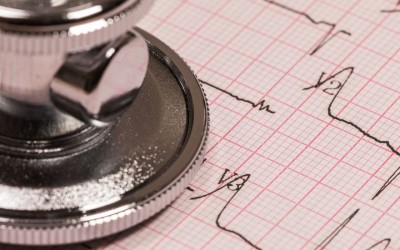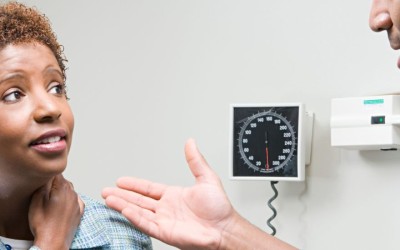
Is in-home care an effective way to treat high blood pressure after pregnancy?
Feasibility of home-based treatment among participants in a remote postpartum hypertension program
Postpartum hypertension (high blood pressure after pregnancy) is the most common reason for hospital readmission following delivery. This study aimed to assess the feasibility (ease and convenience) of in-home treatment of postpartum hypertension through a remote monitoring (RM) program. If effective, RM programs (also called telehealth or telemedicine) can identify individuals who can be treated safely without going to the hospital.
Participants enrolled in the study were recruited at delivery. An in-home urgent care used a remote blood pressure (BP) management program to monitor participants. The BP management program tracked indications for postpartum hospital referral as 1) blood pressure greater than 160/110 mmHg and 2) postpartum headache. A medic team would visit the participants in their homes and conduct a tele-hospitalist consultation, collect labs, and administer necessary medications. The feasibility of in-home treatment was defined by rates of emergency room (ER) visits or hospital readmissions within 7 days of the in-home visit.
Of the 2880 eligible participants, 52 joined the in-home care study. The average age of participants was 33 years, with 50% identifying as Black and 56% being publicly insured. Overall, 43 (83%) participants were treated successfully at home without any readmissions or ER visits in the subsequent week. The remaining 9 individuals were transported to the ER or severe hypertension unresponsive to medications.
The study concludes that in-home treatment for acute severe hypertension and postpartum headache is feasible and safe, effectively reducing ER visits among a racially and socioeconomically diverse population. The model shows promise for expansion to areas with limited maternity care access, utilizing local EMS and telemedicine to provide care outside the hospital setting.
Take home: A study analyzing the feasibility of in-home treatment for postpartum hypertension found it to be a safe and effective method for reducing emergency room visits among a diverse population. Postpartum patients should continue to monitor their blood pressure after leaving the hospital and may rely on telehealth and EMS for assistance outside of the hospital environment to improve outcomes and help avoid readmission.
Link: https://pubmed.ncbi.nlm.nih.gov/38823570/
Citation: Hauspurg A, Shopland B, Simhan H, Larkin J, Binstock A, Countouris M, Zalenski D. Feasibility of home-based treatment among participants in a remote postpartum hypertension program. Am J Obstet Gynecol. 2024 May 30:S0002-9378(24)00660-4. doi: 10.1016/j.ajog.2024.05.051. Epub ahead of print. PMID: 38823570.
About Research Roundup
Each quarter, our team of science writers reviews the most current research studies related to hypertensive disorders of pregnancy and summarizes those studies of greatest interest and potential impact to our community, including research studies related to risk assessment, diagnosis, prevention, and treatment. Special thanks to our volunteer research team, including Dr. Sig-Linda Jacobson, Dr. Jennifer Mitchell, and Amanda Yang, who under the leadership of Dr. Elizabeth Sutton, make Research Roundup possible, and to our Patient Advisory Council, who reviews these materials from the patient perspective.
Related Articles

Your story is needed to improve outcomes for moms like you. Add your voice to critical preeclampsia research to ensure that every story is heard.

Frequently asked questions about the Preeclampsia Registry, a patient-driven registry and biobank.

The Preeclampsia Foundation offers research funding, study recruitment, and other patient engagement services to researchers.

We provide research grant funding to advance progress towards detection, prevention, or treatment of preeclampsia, HELLP syndrome, and other hypertensive disorders of pregnancy.
_(3)1726760217.png)
Preeclampsia Foundation and Preeclampsia Foundation Canada have announced that Olivia Nonn, PhD, Mancy Tong, PhD, and Kelsey McLaughlin, PhD are their 2024 Vision Grant research award recipients. Thes...

Development and validation of a new algorithm for improved cardiovascular risk prediction Heart disease or cardiovascular disease (CVD) is a leading cause of death worldwide. An individual&r...

Women With a History of Preeclampsia Exhibit Accelerated Aging and Unfavorable Profiles of Senescence Markers Scientists conducted a study to see if women with preeclampsia were more likely...

Postpartum Ambulatory Blood Pressure Patterns Following New-Onset Hypertensive Disorders of Pregnancy After experiencing gestational hypertension or preeclampsia, high blood pressure can wors...

Patterns of Gestational Hypertension or Preeclampsia Across 2 Pregnancies in Relationship to Chronic Hypertension Development: A Retrospective Cohort Study Experiencing preeclampsia or gestat...



